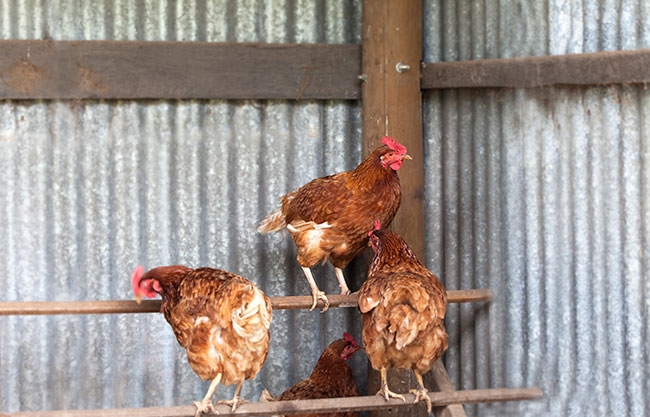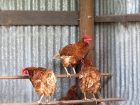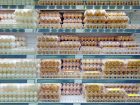
Cage-free lessons from abroad
By Treena Hein
Features Layers Production Alternative poultry housing Animal Welfare Egg production Success in Agriculture United StatesWhat Canadian egg farmers can learn from the layer hen housing transition in the U.S.
 Cage-free surplus Photo: Getty Images
Cage-free surplus Photo: Getty Images“U.S. shift to cage-free eggs causing market disruption.” That was the title of an editorial blog published in July by WATT, publisher of WATT Poultry USA magazine. In it, Terrence O’Keefe, content director of agri-business, notes, “It will continue to be a bumpy transition for the cage-free egg market unless major egg purchasers set and stick to interim goals for cage-free egg purchases.”
O’Keefe notes that U.S. egg producers have been diligently converting existing housing and building new facilities to meet the sourcing commitments for cage-free eggs made by major North American companies, commitments mostly for 2025. “The problem is that the market currently doesn’t want this many cage-free eggs,” O’Keefe states. “The negative impact of this cage-free egg surplus has been magnified by the fact that there is an oversupply of cage-produced eggs as well.”
The American Egg Board, the U.S. Poultry & Egg Association and the United Egg Producers did not agree to comment on why there’s an oversupply of cage-produced eggs in the U.S. right now, or why the market for cage-free eggs is weak. Nor would they comment on what is being done to address the situation – perhaps retailers should be doing more promotion on cage-free eggs, or as O’Keefe suggests, major egg purchasers should be setting and working to reach interim cage-free goals. They would also not comment on whether American egg producers have been too fast in converting to cage-free.
Willing to provide some thoughts is Brian Moscogiuri, a market analyst of shell eggs and egg products who works at U.S.-based consulting firm Urner Barry. As to the main reasons there is an oversupply of cage-produced American eggs, Moscogiuri starts by explaining how cage-free demand was slowly but steadily growing prior to the Avian Influenza (AI) outbreak in 2015. During the AI outbreak, due to lowered supply, cage egg prices reached all-time highs, while cage-free and other speciality eggs saw only moderate price increases. At the outbreak peak, however, cage-free prices were at times cheaper than cage eggs. “This inflated demand in that category and was part of the reason so many companies set cage-free initiatives,” Moscogiuri says. “As prices moderated, spreads returned to normal. Generic or cage production recovered but demand has yet to fully return to normal. This created some of the lowest prices seen in the last decade.”
Moscogiuri notes that retailers have been aggressively trying to sell cage eggs, some at times offering them for as little as $0.25 U.S. for a dozen large eggs, further widening spreads with cage-free eggs. Meanwhile, producers began adding cage-free initiatives in order to meet future deadlines, and these production increases and the price competition leave cage-free oversupplied in the current market environment.
As to whether egg producers in the U.S. have been too fast in converting facilities from cage to cage-free egg production and building new cage-free facilities, Moscogiuri points out that producers had no choice but to start converting some of their facilities in order to fill orders associated with their customers’ needs, but as explained, “right now supply is outpacing the demand.”
CANADIAN PLANS
Will there be such a great price differential between cage and cage-free eggs in Canada as the number of cage eggs on the market decreases in the coming years? Egg Farmers of Canada’s answer is focused on the big picture. “A wide variety of factors affect the price of eggs which is set by stores and restaurants, and a shift in production methods will impact the cost of eggs,” CEO Tim Lambert notes. “Our focus in the coming years remains on promoting a balanced portfolio of production types – enriched, aviary, free run and free range housing. This approach minimizes risk and leads to variety, choice and a nimble and responsive industry – all key to maintaining a stable supply of eggs and to ensuring the entire supply chain isn’t just as vulnerable 10 years from now to whatever trends and issues may be upon us then.”
We also asked EFC whether it’s a concern that egg producers in Canada will convert housing at a speed that seems to be causing issues for producers in the U.S. In his answer, Lambert notes that it’s important that a transition of this magnitude keeps step with demand, and that a systematic, orderly phase out of conventional housing protects consumers by avoiding supply shortages and the production of eggs for which there is no market. He says the Canadian egg industry will reduce volatility by staggering and gradually retiring conventional systems in favour of alternatives. “This is why the industry analyzed what is realistic and achievable, projecting a 50 per cent restructuring in eight years, with 75 to 100 per cent in alternative systems in 13 to 20 years,” he explains. “These projections take many critical factors into account, including current production, existing farms, marketing data and direction, trend analysis, international research and lessons learned, consumer preferences and other forces.”
Canadian egg farmers, Lambert says, are diversifying their production practices based on the best available scientific information. “This steady, co-ordinated and cross-supply chain approach takes into consideration a number of factors including hen welfare, human health, other resource implications, environmental impact and food production sustainability,” Lambert explains. “These factors are complex, and they need to be better and more widely understood outside the industry. We will be working hard in the coming years to do just that.”
As far as what needs to happen in the future in the U.S., in his blog entry O’Keefe points to the need for retailers “to start closing the gap between the retail price of cage-free and cage-produced eggs if they want to hit interim goals. Retail cage-free egg sales aren’t going to go from 15 per cent for a retailer to 100 per cent over the next eight years without a reduction in the price differential and a lot of promotion.”
New Zealand transition to cage-free
Among other jurisdictions, New Zealand is also in transition to move away from all conventional cages, in its case by 2022. There is pressure from supermarkets against eggs from hens housed in enriched colony cages as well, notes Kerry Mulqueen, senior executive technical officer with the Poultry Industry Association of New Zealand. “Producers are indicating the likely options will be barn or free-range,” he says. In terms of how the industry is going to handle the price differential of caged and barn or colony eggs in the new few years, Mulqueen says he is not sure. “In coming years as the production types that are more costly become the bigger volume,” he says, “the sale of more expensive eggs may be more difficult.”
Print this page



